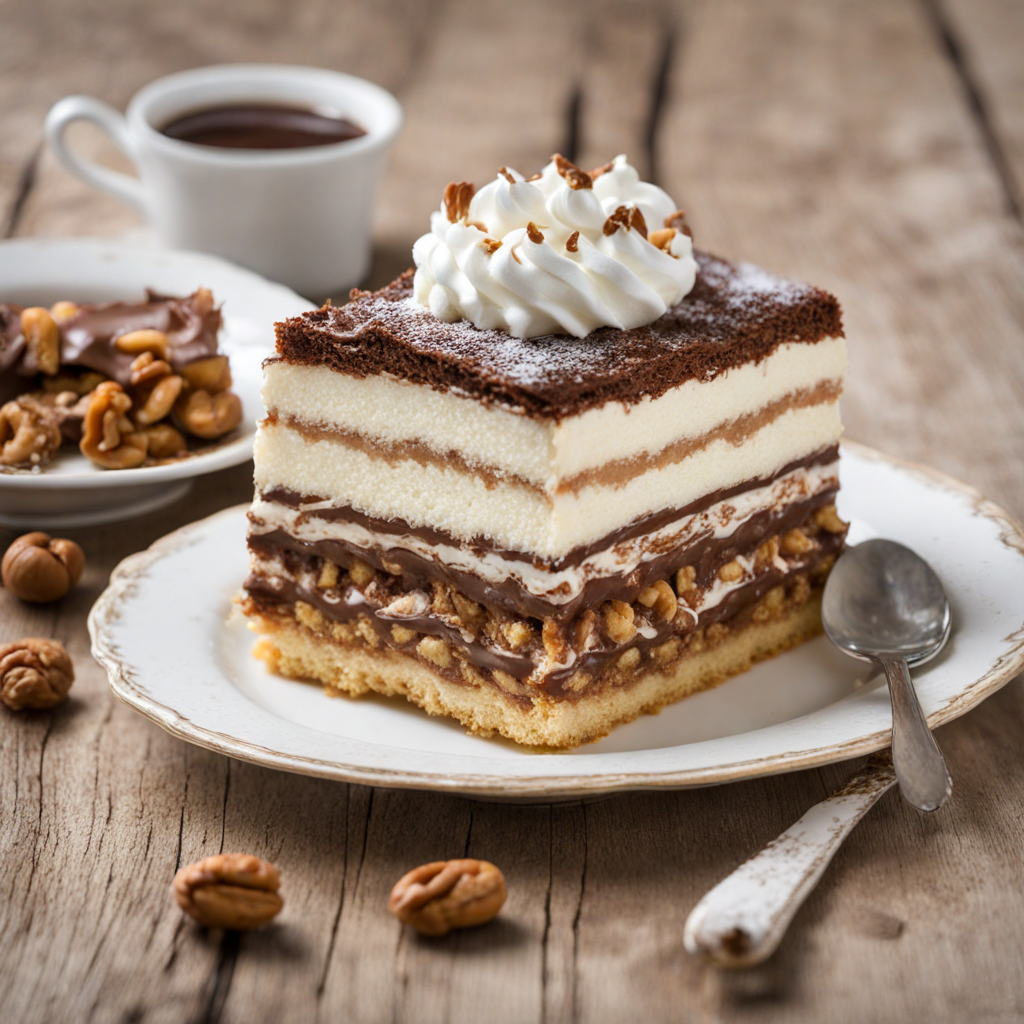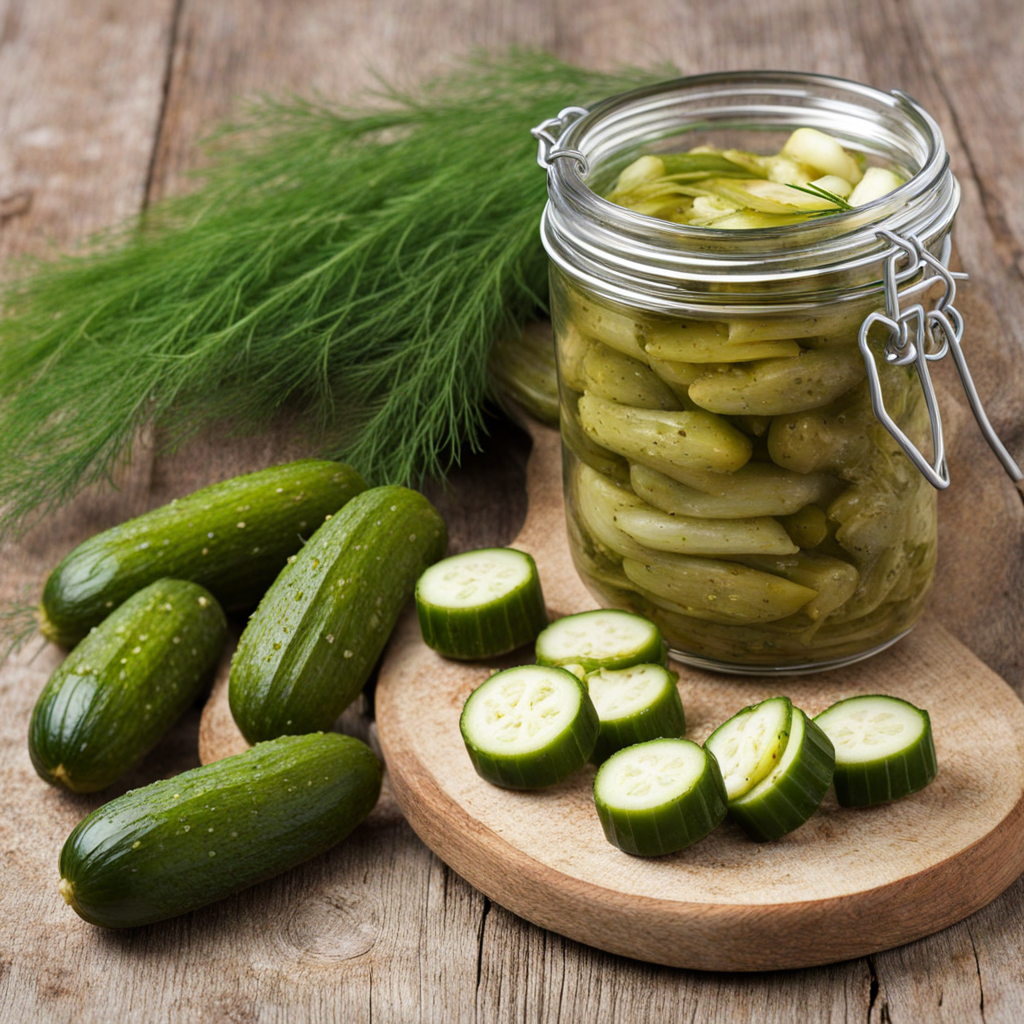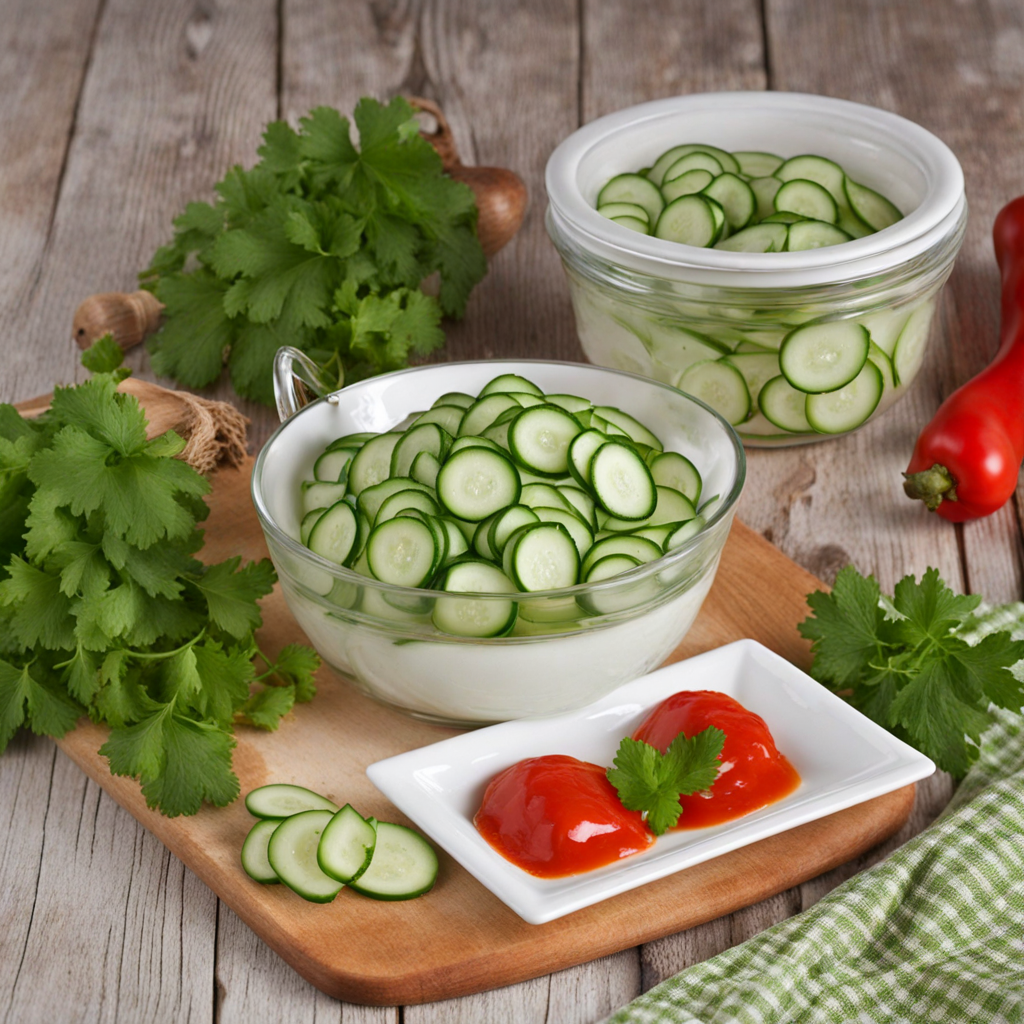Somlói Galuska
Somlói Galuska is a delightful Hungarian dessert that tantalizes the taste buds with its rich textures and flavors. This indulgent treat consists of layers of sponge cake, traditionally made with vanilla, chocolate, and sometimes a hint of rum, which provides a delightful depth of flavor. The cake is typically soaked in a sweet syrup, enhancing its moisture and making it incredibly soft. Each bite reveals a combination of spongy cake and a hint of sweetness that captivates the palate, making it an irresistible choice for dessert lovers. What truly sets Somlói Galuska apart is its generous layering of delightful fillings. The dessert is often interspersed with rich chocolate custard or creamy vanilla custard, creating a harmonious balance of flavors. A sprinkling of walnuts or hazelnuts adds a delightful crunch, while whipped cream on top adds a luxurious touch. The combination of these elements results in a dessert that is both decadent and comforting, perfect for any occasion. Served in individual portions or as a larger cake, Somlói Galuska is not only a feast for the taste buds but also a feast for the eyes. The layers of cream and cake are often finished with a dusting of cocoa powder or grated chocolate, giving it an elegant presentation. Each forkful offers a symphony of flavors and textures that will transport you to the heart of Hungary, making it a must-try for anyone looking to explore new culinary delights.
How It Became This Dish
Somlói Galuska: A Sweet Journey Through Hungarian Culinary Tradition In the heart of Hungary, where the rivers meet and the landscapes blend into a tapestry of rolling hills and vibrant towns, there exists a dessert that encapsulates the spirit of its culture: Somlói Galuska. This indulgent treat, a trifle of sponge cake, chocolate sauce, whipped cream, and rum, tells a story of Hungarian ingenuity, tradition, and the evolution of culinary practices throughout the years. Origins The exact origins of Somlói Galuska are somewhat shrouded in mystery, much like the fog that occasionally blankets the Danube River. However, it is widely believed that this dessert was invented in the mid-20th century, around the 1950s, in the Somló region of Hungary. Named after the Somló Hill, a volcanic formation known for its fertile soil and vineyards, the dessert was initially a humble creation from the kitchens of local bakers. The earliest recipes featured simple ingredients such as sponge cake, which is a staple in many Hungarian pastries, along with chocolate and whipped cream. Yet, what set Somlói Galuska apart was the addition of a rum-soaked sponge cake layered with the other components, giving it a rich depth of flavor that resonated with those who tasted it. Cultural Significance Somlói Galuska is more than a dessert; it is a symbol of Hungarian hospitality and celebration. In a country where food is deeply interwoven with family and social gatherings, this luxurious treat often graces the tables of festive occasions, birthdays, and weddings. Its complex layers reflect the intricacies of Hungarian culture, where simplicity meets elegance, and where the act of sharing food is an expression of love and community. The dessert became particularly popular in the post-war era, as Hungary sought to reclaim its culinary heritage while also embracing modern influences from around the world. Somlói Galuska emerged as a beacon of comfort during turbulent times, bringing families together around the dining table. Its rich flavors and inviting presentation made it an instant favorite among both locals and tourists alike, and it quickly became a staple in restaurants across Hungary. Development Over Time As Hungary transitioned through the decades, the Somlói Galuska also evolved. In the 1960s and 70s, the dessert began to feature variations that incorporated regional ingredients, showcasing local flavors. For instance, some bakers introduced fruit compotes, such as apricot or cherry, adding a tart contrast to the sweetness of the chocolate and cream. Others experimented with different types of spirits, using pálinka, a traditional Hungarian fruit brandy, instead of rum, which further rooted the dessert in local culture. In the late 20th century, the rise of culinary tourism and the globalization of food culture led to greater exposure of Somlói Galuska beyond Hungary's borders. Renowned chefs began to reinterpret the classic recipe, presenting it in innovative ways that maintained its essence while appealing to modern palates. Some offered deconstructed versions, where the components were served separately, allowing for a more interactive dining experience. Others played with textures, introducing elements like crunchy nuts or caramelized layers to create a delightful contrast with the creamy base. With the advent of the internet, the recipe for Somlói Galuska found its way into home kitchens around the world. Food bloggers and culinary enthusiasts began sharing their interpretations, leading to a resurgence of interest in traditional Hungarian desserts. This wave of enthusiasm not only preserved the original recipe but also inspired a new generation to embrace the joys of baking and the importance of culinary heritage. Ingredients and Preparation The classic Somlói Galuska consists of several key components, each contributing to the overall flavor and texture of the dessert. The base is typically a light sponge cake, known as "piskóta," which is baked until golden and fluffy. The cake is then cut into layers and soaked in a generous amount of rum or pálinka, imparting a moistness that is essential for the dessert's success. The next layer often features a rich chocolate sauce, made from high-quality chocolate, butter, and a touch of sugar. This sauce is poured over the rum-soaked sponge, allowing it to seep into the layers and create a decadent experience. Finally, the dessert is topped with a generous dollop of whipped cream, often adorned with grated chocolate or a sprinkle of cocoa powder for an elegant finish. While the traditional preparation of Somlói Galuska is a labor of love, it is also a testament to the art of layering flavors and textures. Each bite is a harmonious blend of sweetness, richness, and a hint of bitterness from the chocolate, balanced by the lightness of the whipped cream. The Modern Era In recent years, there has been a renewed interest in traditional Hungarian cuisine, with chefs and home cooks alike celebrating the country's rich culinary heritage. Festivals dedicated to Hungarian desserts often feature Somlói Galuska, where bakers showcase their unique twists on the classic recipe. Cooking classes and workshops also emphasize the importance of preserving these traditions, allowing participants to learn the art of making this iconic dessert. In Hungary, Somlói Galuska has become a point of national pride, representing a connection to the past while also embodying the spirit of innovation that characterizes modern Hungarian cuisine. As it continues to evolve, the dessert remains a cherished symbol of family gatherings, celebrations, and the comfort of home-cooked meals. Conclusion Somlói Galuska is more than just a dessert; it is a culinary narrative that weaves together the history, culture, and identity of Hungary. From its humble beginnings in the Somló region to its status as a beloved staple in homes and restaurants alike, this dessert embodies the resilience of a nation and the joy of shared meals. As Hungarian cuisine continues to evolve and adapt, Somlói Galuska stands as a delicious reminder of the past, a celebration of the present, and a promise for the future. Whether enjoyed in a bustling Budapest café or lovingly prepared at home, it remains a sweet testament to Hungary's rich culinary tapestry.
You may like
Discover local flavors from Hungary







